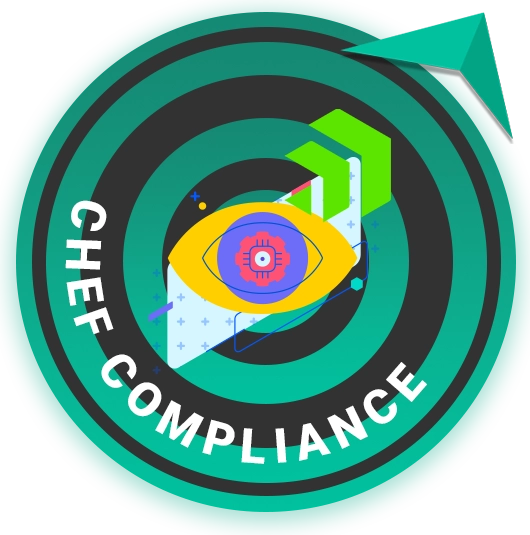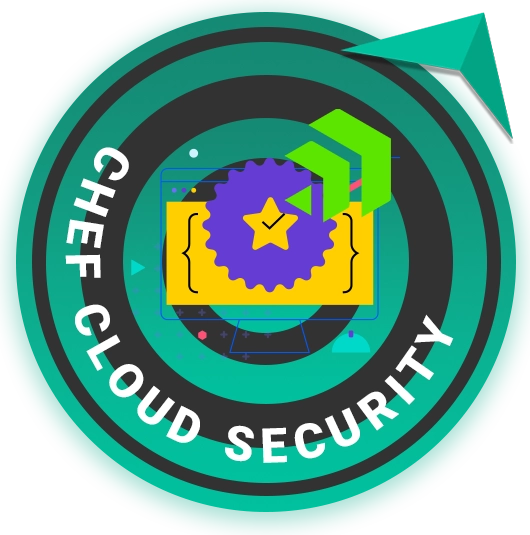CHEF PREMIUM CONTENT ULTIMATE GUIDE
Tool Review & Analysis
Cleared Workforce is a specialty search firm focused on security-cleared Talent Recruitment for Government Contractors.
100+
product reviews of trending tech
100+
tech written guides for users
100+
tech tools in our tool database

CHEF PREMIUM CONTENT
Chef Premium Content is a collection of high-quality, enterprise-ready automation resources designed to enhance and expedite infrastructure management and configuration tasks. It offers advanced cookbooks, recipes, and tools that enable IT professionals and system administrators to automate complex processes and maintain consistent, compliant, and secure environments across various platforms.
Section 1
Installation & Setup
Installation and setup are crucial steps for successfully implementing Chef Premium Content in your cybersecurity environment. Proper installation ensures that your infrastructure is managed consistently and efficiently from the get-go. This section will walk you through the necessary steps to get Chef up and running, including initial configuration and common issues you might encounter.
To install Chef, you first need to download the Chef Workstation package from the official Chef website. This package includes all the necessary tools for managing your infrastructure with Chef. After downloading, install the package on your local machine, following the instructions specific to your operating system. For example, on a Unix-based system, you can usually install Chef Workstation using a command like sudo dpkg -i chef-workstation_<version>.deb for Debian-based systems or sudo rpm -Uvh chef-workstation_<version>.rpm for Red Hat-based systems.
sudo dpkg -i chef-workstation_<version>.debOnce the Chef Workstation is installed, verify the installation by running chef --version in your terminal. This command should return the version of Chef Workstation installed on your machine. Next, set up your Chef repository by cloning the skeleton directory from the Chef GitHub repository. This repository will serve as the base for your Chef code and configurations.
After installing the Chef Workstation, the next step is to configure it for use with your systems. This involves setting up your Chef repository, creating necessary configuration files, and ensuring secure communication between your workstation, the Chef server, and the nodes you will manage. Initially, configure your knife.rb file, which is used by the Knife command-line tool to communicate with your Chef server. This file includes details such as your Chef server’s URL, your client key, and your node name.
Create your organization on the Chef server and download the starter kit, which includes your organization’s validator key and your user key. These keys are used to authenticate your workstation to the Chef server. Next, upload your cookbooks to the Chef server using the Knife command knife cookbook upload <cookbook_name>. This step is crucial as it makes your recipes available to the nodes managed by Chef.
vim knife.rbCommon issues during the installation and setup of Chef include network problems, incorrect file permissions, and errors in configuration files. If you encounter network issues, ensure your firewall and network settings allow communication between your workstation, the Chef server, and your nodes. For file permission issues, ensure your Chef directory and all subdirectories are accessible to the user running Chef commands.
Another common issue is errors in the knife.rb or other configuration files. Double-check the syntax and settings in these files if you encounter problems. The Chef documentation and community forums are excellent resources for troubleshooting specific errors. Remember, log files can provide valuable insights into what might be going wrong.
Section 2
Features and Capabilities
Chef Premium Content offers a wide range of features and capabilities designed to automate the configuration, management, and deployment of your infrastructure. Understanding these features will help you maximize the potential of Chef within your organization. This section dives into the key features of Chef, explores various use cases, and discusses the limitations.
Chef Premium Content includes several key features such as infrastructure as code, automated testing, and seamless integration with cloud services. Infrastructure as code allows you to manage your IT infrastructure using code rather than manual processes. This approach increases efficiency and consistency across your environments. You can write Chef recipes in Ruby, which describe how your servers and applications should be configured.
Automated testing is another critical feature, allowing you to test your infrastructure code before deployment. This ensures that any changes made to your configurations are correct and do not introduce errors into your systems. Chef supports several testing frameworks, such as Test Kitchen, InSpec, and ChefSpec, to help validate your infrastructure’s state.
Chef Premium Content can be applied in various scenarios, from managing small-scale server configurations to large, complex cloud environments. Common use cases include automating server setups, managing user permissions and software installations, and ensuring compliance across your infrastructure. For example, Chef can automate the setup of new servers, ensuring they are configured correctly from the start.
Chef is also used for continuous deployment, allowing teams to automatically deploy and update applications across various environments. This capability supports modern DevOps practices, reducing the time and effort required to release new software updates.
While Chef offers extensive capabilities, it also has some limitations. The learning curve can be steep for those new to infrastructure as code or Ruby. Additionally, Chef’s model requires a central server, which could be a single point of failure if not properly managed and backed up.
Furthermore, Chef may be less suited for environments where immediate, real-time changes are needed on a large scale, as its execution model is primarily pull-based. Understanding these limitations will help you determine if Chef is the right tool for your specific needs and how to mitigate potential challenges.
Section 3
Advanced Usage and Techniques
Beyond basic configuration and deployment, Chef Premium Content enables advanced usage and techniques to further optimize your infrastructure management. This section covers advanced features, best practices for using Chef effectively, and how to integrate Chef with other tools and systems to create a cohesive and efficient workflow.
Chef offers advanced features like custom resources, data bags, and environments for managing complex infrastructures. Custom resources allow you to extend the functionality of Chef by creating your own resources that encapsulate specific business logic and system configurations. This is particularly useful for repeating patterns or custom applications within your environment.
Data bags provide a way to manage data shared between nodes, such as user credentials or database passwords, securely and efficiently. Environments allow you to define different settings for your nodes depending on their stage in the lifecycle, such as development, testing, or production, helping to ensure consistency and prevent configuration drift.
Adopting best practices in using Chef ensures that your infrastructure management is efficient, secure, and maintainable. This includes version controlling your Chef code, regularly testing your cookbooks, and utilizing community cookbooks and resources wisely. Implement continuous integration and deployment for your Chef code to catch issues early and automate the deployment process.
Moreover, keep your cookbooks small and focused, which makes them easier to understand and maintain. Document your code and use clear naming conventions to make your infrastructure code accessible to new team members and stakeholders.
Chef can be integrated with various tools and systems to enhance its functionality and streamline workflows. For instance, integrating Chef with version control systems like Git enables collaborative development and versioning of your infrastructure code. Chef can also be integrated with continuous integration/continuous deployment (CI/CD) pipelines, such as Jenkins or GitLab CI, to automate the testing and deployment of your infrastructure changes.
Furthermore, Chef works well with cloud platforms like AWS, Azure, and Google Cloud, allowing you to manage your cloud resources and infrastructure code in a unified manner. Utilizing these integrations effectively can greatly increase the efficiency and reliability of your infrastructure management.
Section 4
FAQs
The FAQs section addresses common questions and misconceptions about Chef Premium Content, providing clear and concise answers. This section is designed to help users understand the tool better and to clarify any uncertainties they may have.
- What is Chef Premium Content? Chef Premium Content is a collection of high-quality, ready-to-use configurations and resources for managing your infrastructure with Chef. It includes cookbooks, recipes, and other components designed to simplify and enhance your use of Chef.
- How does Chef manage configurations? Chef uses code to automate the configuration and maintenance of servers and applications. This code, written in Ruby, defines the desired state of your system resources, such as packages, services, and files.
- Can Chef be used for both physical and virtual environments? Yes, Chef can manage both physical servers and virtual machines, providing a flexible toolset for managing a wide range of infrastructure types.
- How does Chef integrate with cloud services? Chef integrates with cloud platforms like AWS, Azure, and Google Cloud, allowing you to manage and automate cloud resources alongside your on-premises infrastructure.
- Is Chef suitable for small-scale projects? Yes, Chef can be beneficial for projects of any size. While it is powerful enough for managing large-scale infrastructures, its flexibility and automation capabilities can also bring significant advantages to smaller projects.
- Misconception: Chef is only for large enterprises. While Chef is widely used in large organizations, it is also highly applicable and beneficial for startups and smaller companies looking to automate and improve their infrastructure management.
- Misconception: Chef requires extensive Ruby knowledge. Although Chef recipes are written in Ruby, you don’t need to be a Ruby expert to use Chef effectively. Basic programming concepts and understanding the structure of Chef recipes are generally sufficient.
- Misconception: Chef and Docker serve the same purpose. Chef and Docker are complementary tools; Chef manages the configuration of servers and environments, while Docker containers package and distribute applications. They can be used together to automate and streamline the deployment and management of applications.
- Misconception: Chef is too complex for small projects. Chef can bring automation and efficiency benefits to projects of any size. Its flexibility allows you to start small and scale up as your infrastructure grows.
- Misconception: Chef can only manage Linux-based systems. Chef is platform-agnostic and can manage a variety of systems, including Linux, Windows, and macOS.
Section 6
CHEF PRODUCT SUITE
The Chef product suite includes the following tools:
Helps ensure configurations are applied consistently across environments through automation.

CHEF INFRA MANAGEMENT
Automates application delivery to enable consistent and successful application outcomes at scale.

CHEF APP DELIVERY
Maintains compliance and prevents security incidents across different environments while improving efficiency.

CHEF COMPLIANCE
Automates IT resource management to enhance efficiency and reduce risks.

CHEF DESKTOP
Provides access to ready-to-go compliance scanning and remediation content.

CHEF PREMIUM CONTENT
Offers end-to-end cloud security management to maintain compliance and prevent security incidents.

CHEF CLOUD SECURITY
The cybersecurity information provided on this site is strictly for educational use. We hold no responsibility for misuse and urge users to apply these skills ethically, on networks or systems where they have explicit authorization – such as a private home lab.
